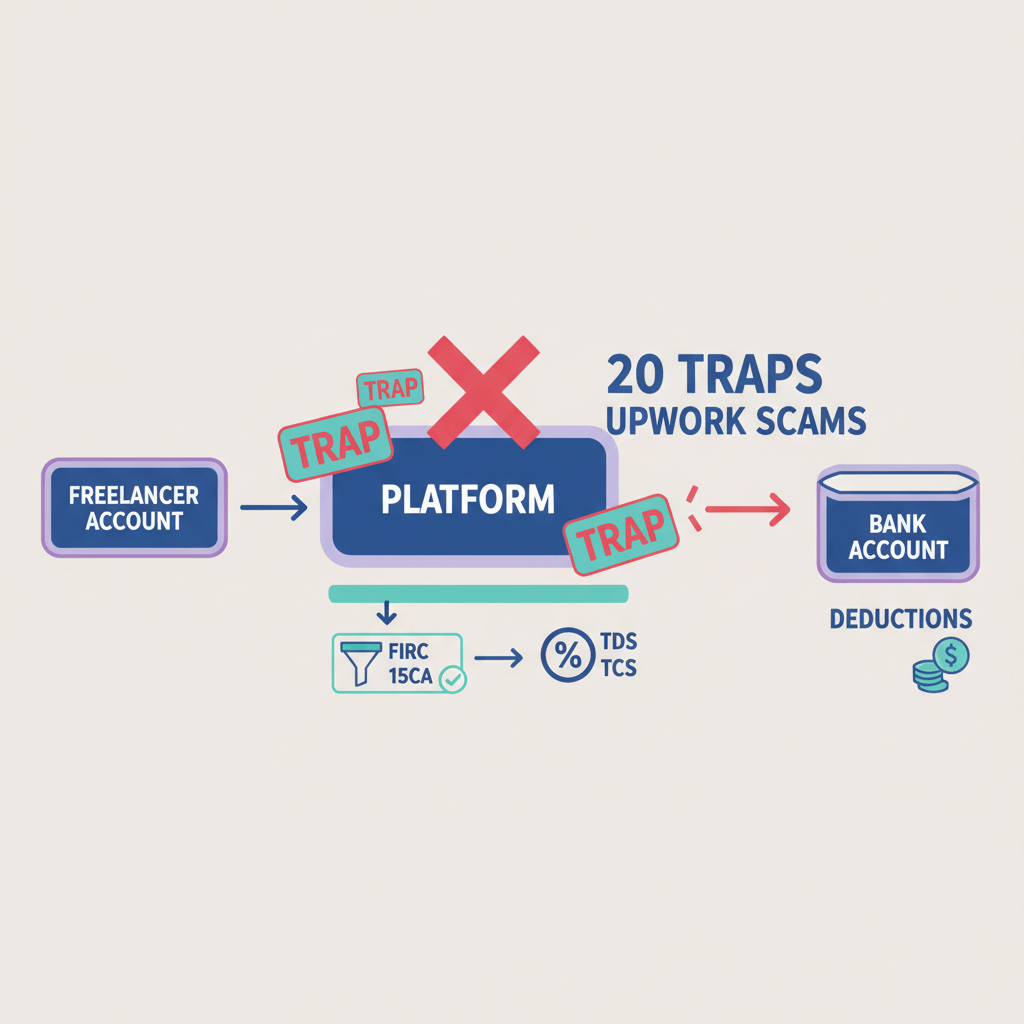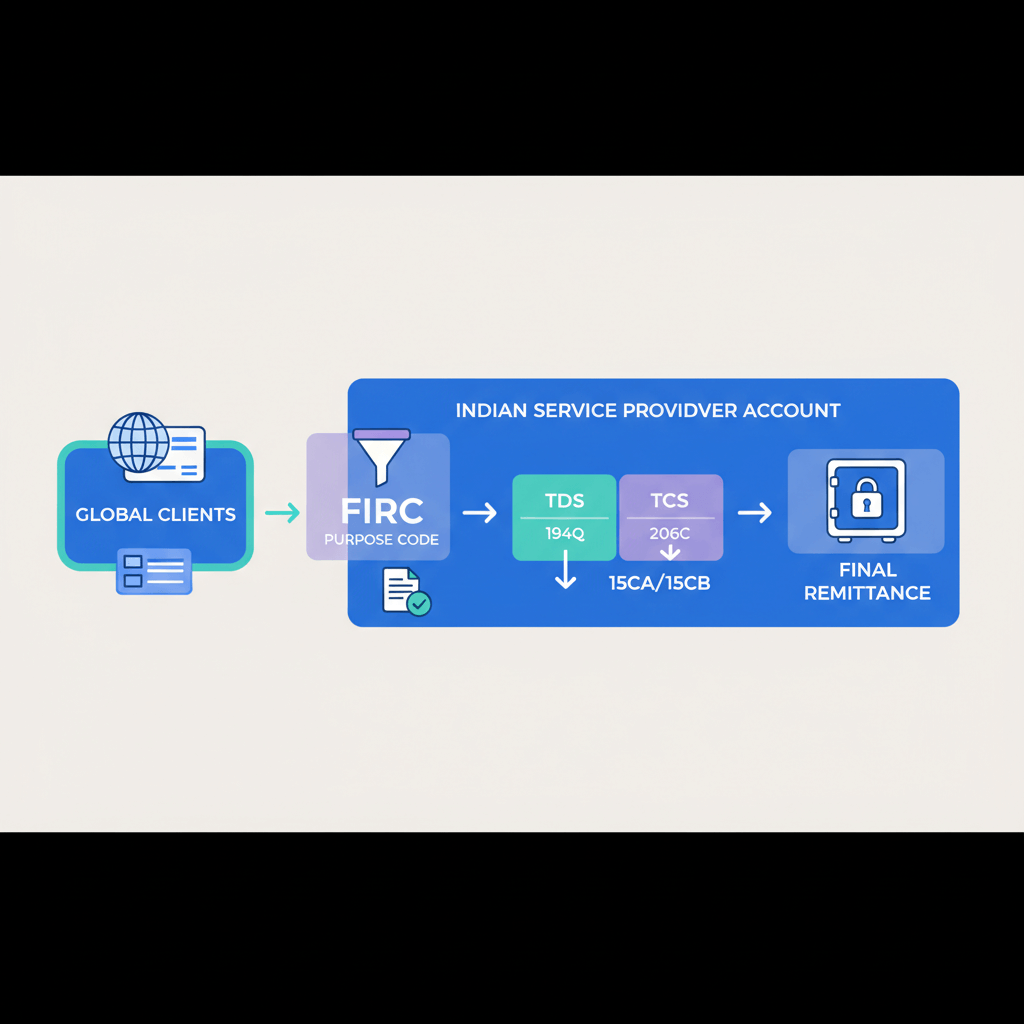If you're someone who's been stressing out about filing taxes in India, you're not alone. It's a process that can be overwhelming.
But have you ever heard of the 15CA and 15CB forms? What is the difference between 15CA and 15CB? These are often a cause of confusion, even for seasoned tax filers.
Here's the deal - 15CA and 15CB forms might look similar, but they're pretty different.
And honestly, it's not hard to see why.
And understanding which one you need to file and when is key to staying on top of your tax game.
But don't worry, we've got you covered.
So whether you're a seasoned tax pro or a newbie, by the end of this article, you'll have a clear understanding of the difference between 15CA and 15CB forms and be better equipped to handle your tax filings like a boss. Let's dive in!
Certification Difference Between 15 CA and 15 CB
To ensure compliance with national regulations, strict rules have been established for all foreign remittances made to non-residents. Taxation is applied to specific amounts based on predetermined slabs and there is a clear difference between 15CA and 15CB forms in terms of functionality. To complete the remittance process, individuals must submit Form 15CA online, and a certificate from a chartered accountant is necessary for Form 15CB.
The purpose of Form 15CB is to ascertain the applicable tax deduction under income tax regulations and prevent double taxation. If the remittance is subject to taxation, TDS will be levied once again.
Form 15CB contains essential information regarding the remittance, including the particulars of the remittee and remitter, details about the nature of the remittance (such as royalty, salary, or commission) as per the agreement between both parties, the Tax Residency Certificate, and bank account details of the remitter, if applicable under Double Taxation Avoidance Agreement (DTAA).
What is Form 15CA?
Form 15CA is a declaration made by the remitter, which serves to gather information on payments subject to taxation in the hands of non-resident recipients in India.
Additionally, it implements a cutting-edge information processing framework, specifically designed to facilitate the Income-tax Department's supervision of international fund transfers and the identification of their origins. Consequently, this advanced system enables precise evaluation and determination of tax liabilities.
Make Note: Financial institutions with automation of vendor payment solutions, are becoming increasingly vigilant in requesting Form 15CA before initiating a remittance, as per the revised Rule 37BB.
What is Form 15CB?
Form 15CB is a necessity according to Section 195(6) of the Income-tax Act. This certificate is like an alternative way to get outward remittance tax clearance, not the one from the Assessing Officer. So, make sure you get it to stay out of trouble!
Form 15CA/CB Applicability - When to Use Them?
It is very important to know which transactions fall under the applicability of Forms 15CA and 15CB for compliance with Indian tax regulations.
1. When Do I Need Form 15CA?
- Threshold Limit: Form 15CA is required when the total payment to a non-resident exceeds ₹5 lakhs during any financial year. Form 15CA is mandatory in such cases.
- Nature of Payment: Form 15CA needs to be furnished in respect of payments containing salary, royalties, commissions, or fees for rendering any professional services by non-residents.
- Taxable Amounts: If the payment is liable for tax in India, then Form 15CA is required as the remittance needs to be declared as taxable under the Income Tax Act and its provisions need to be complied with.
2. When to Submit Form 15CB?
- Compulsory Attachment: Form 15CB is compulsorily attached with every remittance above ₹5 lakhs. Form 15CB is the certificate issued by a Chartered Accountant evidencing that TDS has been made at the appropriate rates.
- Details Included: Form 15CB contains vital information such as the nature of the remittance, the details of the remittee and remitter, and the relevant Tax Residency Certificate.
- Tax Deduction Certificate: It verifies that the remittance complies with the double taxation avoidance agreement (DTAA) provisions, if applicable.
How to File Form 15CA - Procedure
Step 1: Get the Form
Log into your account in the e-filing portal of the Income Tax Department and navigate through the 'Forms' section to locate the Form 15CA.
Step 2: Choose the Right section:
Based on the amount and mode of payment, the appropriate section of Form 15CA needs to be chosen.
- Section A: The remittances are within ₹5 lakhs.
- Section B: The remittances are more than ₹5lakhs but do not require Form 15CB.
- Section C: The remittances are more than ₹5 lakhs and require Form 15CB.
- Section D: The payment is exempted from the tax provision under the Income Tax Act.
Step 3: Fill in the Details
Input all relevant information including the nature of payment, tax identification details of the recipient, and other information.
Step 4: Submit the Form
Once you ensure that everything is correct, submit the form online.
Procedure for Filling out Form 15CB
Step 1: Obtain a Chartered Accountant:
Since Form 15CB needs to be signed by a Chartered Accountant, you will need to obtain a CA who will accompany you in this process.
Step 2: Collect Required Documents:
The following documents must be provided to the CA:
- Information about the remittance
- Tax Residency Certificate
- The agreement with details of the nature of the payment.
Step 3: Filling up the form:
Your Chartered Accountant will fill up all relevant details of the form, which include:
- Details of the remitter as well as the remittee.
- Nature of remittance
- TDS Applicable Rates.
Step 4: Review and Sign:
Check that all the information in the form is correct before signing it. The Chartered Accountant will stamp the form, and from then onwards, it is ready for submission.
Final Steps
Both forms can be submitted by using the e-filing portal. Form 15CB is to be kept as a hard copy as this would be necessary with the bank/financial institution undertaking the remittance.
Difference Between 15 CA and 15 CB Form Submission Process
The Income-tax Department has implemented a thoroughly revamped consent process while highlighting the difference between Form 15CA and Form 15CB, submission process, incorporating valuable input from numerous businesses and industry experts throughout India. This comprehensive update is intended to optimize the preparation, allocation, submission, and authentication procedures, resulting in a more efficient filing cycle for the form.
Parts of Form 15CA
In cases where the payment or cumulative payments made to the Non-Resident Indian (NRI) recipient within a given financial year do not exceed Rs. 5 Lakhs, the remitter is responsible for completing Section A of Form 15CA, Part A.
In cases where the payment exceeds Rs. 5 Lakhs, Section B, Part B of the form is utilized.
When the total payments made during a financial year exceed Rs. 5 Lakhs, Section C, Part C of the form is employed. After obtaining a valid Tax Determination Certificate or Form 15CB from a certified Chartered Accountant, the required information must be provided by subsection (2) of section 288.
In cases where the payments are exempt from taxation as per the law, or not covered under sub-section 37BB, Section D, Part D is utilized to document the relevant information.
Please note that as per the Income Tax Act 1961, Form 15CB is mandatory only if the remittance exceeds Rs. 5 Lakhs during the specified fiscal year.
What is the need for 15CA and 15CB?
While the main difference between 15CA and 15CB is the initiator of the forms, the primary objective was to ensure there was a distinction between Form 15CA and CB in terms of the timely collection of taxes during the remittance process.
To ensure efficient monitoring of these transactions, the proposal to introduce electronic filing of information in certificates was put forth.
To comply with this obligation, the individual initiating the remittance to a non-resident must submit an undertaking (Form 15CA) along with a certificate (Form 15CB) issued by a Chartered Accountant.
FAQs
1. What are the Remittances that don’t require 15CA & 15CB?
An individual is not obligated to provide details in Form 15CA and 15CB for remittance transactions that do not require prior approval. Rule 37BB specifies a list of 33 payment categories exempt from compliance and reporting requirements through the submission of Forms 15CA and 15CB.
2. What is form 15CB used for?
Form 15CB is a certification provided by an accountant that is mandatory for making payments to a Non-Resident (excluding companies) or to a Foreign Company that is taxable, in cases where the payment or aggregate of such payments exceeds ₹5 lakh in a given financial year.
3. When 15CA and 15CB are required?
If a remittance of up to Rs. 5 lakh is made per financial year, only Form 15CA-Part A is needed. However, if the remittance exceeds Rs. 5 lakh, both Form 15CA and Form 15CB must be submitted.
4. What is form 15CA and 15CB for foreign remittance?
Before making a remittance, the individual needs to understand the difference between 15CA and 15CB. Such payments require the filing of Form 15CA for each transaction. In certain cases, on the other hand, the submission of Form 15CB, a certificate issued by a Chartered Accountant, is necessary.
5. Is 15CA required for LRS?
According to the RBI's Liberalised Remittance (LRS) Scheme, remittances that do not require RBI clearance do not necessitate the submission of Form 15CA or Form 15CB.











